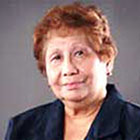TWO years ago, we suddenly found ourselves in a new normal. Since then, we have had much reduced social connections. Without assurance of when this situation ends, the wicked consequences of the lockdowns and mobility restrictions continue in many regions of our country. Although a bit less strict in some regions, this situation has caused us much loneliness, threats to mental health, anxiety, stress and depression. Confronting this experience and keeping tight to faith in the goodness of our heavenly Father, we turn to music for needed solace. Given this, we find better ways to teach on-line music education.
Early music education history. Three different settings provide the context of Music Education in the Philippines. Music Education can be provided to a community as part of a people's culture. Another setting is the basic education of a country's youth and a third is a college curriculum which could lead to a professional career either in Music Education or Music Performance. (Borromeo n.d.). Recalling its early beginnings, Philippine formal Music Education dates back during the 1500s when the Spanish colonizers brought western music to the islands. "Solfeggio, vocalization, and composition," were part of the proper music training taught in schools "established by the church missionaries and music teachers" (Del Valle n.d.). As in any tradition, Philippine music education had its relative changes regarding curriculum contents and structure. (https://ir.lib.hiroshima-u.ac.jp › files › public › M.)
Continue reading with one of these options:
Ad-free access
P 80 per month
(billed annually at P 960)
- Unlimited ad-free access to website articles
- Limited offer: Subscribe today and get digital edition access for free (accessible with up to 3 devices)


